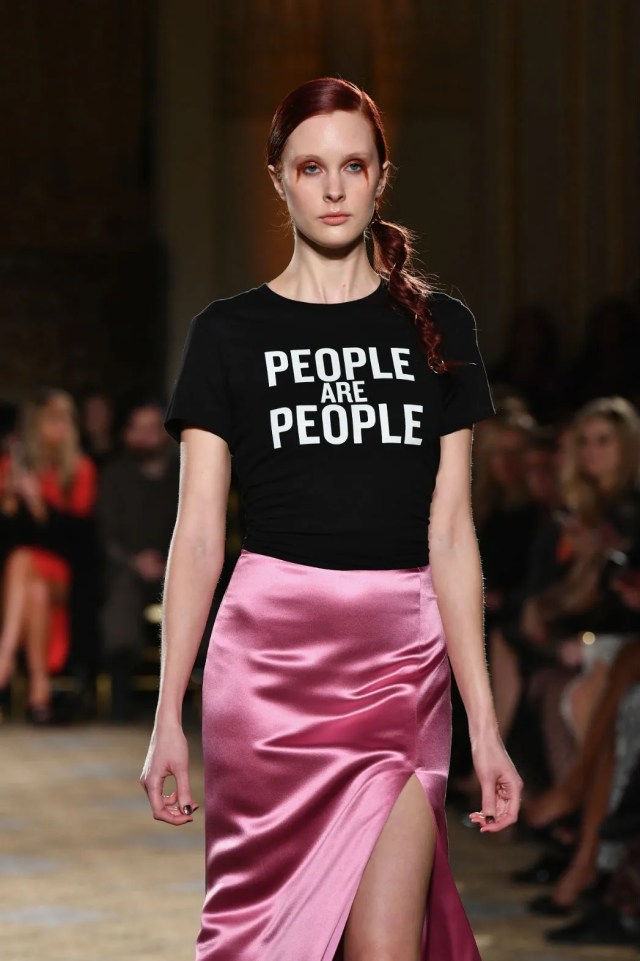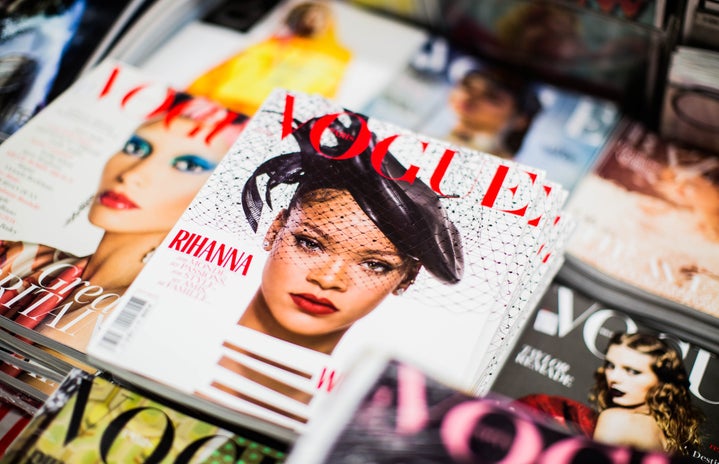In recent years, fashion has quickly grown as a method for expressing political opinions. In 2020, Vogue published an article, “Power Dressing: Charting the Influence of Politics on Fashion,” about the role of clothing in making your views known. The article cited examples like the Pyer Moss 2019 show and Burberry’s Fall 2018 Pride collection and how they, among others, have been used to highlight key messages within movements like Black Lives Matter, Pride and Feminism. In this new age of social activism and media, this type of phenomenon is really interesting and can tell us a lot about how our engagement with the political sphere has evolved.
Increasingly over the last few years, fashion designers have been using their platforms and artistic abilities to make bold political and social statements. These displays have caught the attention of many people via the media world, and have resulted in numerous headlines and social media posts bringing light to social and political issues visible in countries all around the world. This is especially prominent in the United States where numerous designers have taken to addressing Black Lives Matter as well as issues within voting in America.
Pyer Moss’ Spring 2020 Ready-to-Wear collection, designed by Kerby Jean-Raymond, featured beautiful runway looks that paid tribute to Black Americans. Models wore silk tunics and dresses with intricate designs of black families and black life, and the most talked-about looks were the graphic tees that referenced the social injustices towards black people that have gone viral since the start of the pandemic.

One tee read “Stop calling 911 on the culture,” referring to reports of unjustifiable police calls being made on black people, while another read “See Us Now,” a bold call out of how the U.S clearly disregards the lives and safety of black people. This show brought lots of attention to injustices against black people, bringing forward countless instances of police brutality, racial harassment in public spaces, and many more experiences that put the lives of black people in danger. A major part of the activism this encouraged was centred around recognizing how the U.S government was complicit and silent in these instances, urging them to speak up and do their part to fix these issues.
Designer Christian Sirianio also engaged in the use of graphic tees to send important political messages. In his Spring 2019 Ready-To-Wear collection, models wore tees with the words “Vote For Cynthia.” This message was to support Cynthia Nixon, a famous actress who was running for Governor of New York with ideas for very progressive changes and advancements to the government’s approach to social, political and economic injustices. Despite losing the election, Cynthia has been widely applauded for using her celebrity status to call out the lack of action by political officials to make meaningful changes in government regarding things like criminal justice system reform.

Other models’ shirts targeted then-president Donald Trump, with the words “People are People,” attacking his racially-motivated verbal attacks against immigrants and other people of colour. Unlike Moss, this show was more of a call to urge Americans of their duty to vote and bring change to its corrupt governments.

Another very progressive show that called for change was Burberry’s Fall 2018 Ready-To-Wear runway. This collection was full of rainbows and symbols of gay pride and even resulted in a large donation to youth charities for LGBTQ+ rights and mental health. Rather than a call to the government, this collection was a call to the people to open their hearts and minds and fight homophobia, in an effort to make the world a more inclusive place. It was not limited to the U.S either, as this collection gained attention all around the world.
Arguably the most prominent instance of the use of fashion for political expression has been the Met Gala; the fashion industry’s equivalent of the Oscars. This event has been known for curating impressive and bold looks that seek to make statements and gain immense media coverage. In the most recent gala in September 2021, the theme was ‘American Independence’ and not surprisingly, many designers and celebrities alike decided to use the event to express their political views. Designer Aurora James worked with Alexandra Ocasio-Cortez (AOC), an American politician and activist, to send the message “Tax the rich” in bold red letters onto a white gown. This look caused an uproar on social media with very controversial opinions especially after AOC shared her outfit on Instagram with the caption, “The time is now for childcare, healthcare, and climate action for all. Tax the rich.”

Supermodel Cara Delevigne also made a statement at the Met Gala with her custom Dior outfit she created with designer Maria Grazia Chiuri. The look was inspired by female empowerment and sexuality, with a top that read “PEG THE PATRIARCHY.” Much like AOC’s outfit, this also went viral and caused a wave of controversy to surface in the social media world. Despite the attention both Cara and AOC’s looks received for calling out injustices like sexism and unequal wealth, many have questioned whether both women were sincere in their displays or simply looking for attention and media coverage.
Regardless of the deeper reasoning behind these designs and the political statements those wearing them intend to make, they are only a few of the countless examples of how politics and fashion have begun to increasingly interact with one another. As The Guardian said regarding this phenomenon, the show is often more powerful than tell, and as a result, the use of clothing to express political opinions only continues to grow.
In this current age of social media and social media activism, visuals are immensely important. If there is one way this generation is going to change the world, it is going to be through the internet and what better way to do so than through something as simple but powerful as the clothes we wear. As more time goes by, each generation has sought to approach the political sphere in a more modern and advanced way, and we can very well expect future historians to look at this era of fashionable politics as impressive and profoundly creative.


